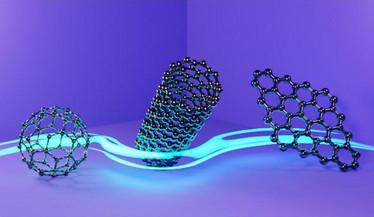Carbon for Energy

In the dynamic landscape of the energy sector, carbon stands as a key element with immense potential for revolutionizing energy storage. From traditional fossil fuels to cutting-edge carbon nanotubes, every form of carbon plays a crucial role in advancing energy storage devices.
From traditional fossil fuels to cutting-edge carbon nanotubes, and including carbon reinforcing composites and semiconductors, carbon in all its forms plays a crucial role in advancing energy storage devices.
However, harnessing this potential requires continuous research, innovative manufacturing processes, and sustainable recycling solutions.
HORIBA provides a full characterization of carbon materials to solve the key challenges of R&D and Quality Control:
Efficiently storing and releasing energy without significant losses, mitigating air pollution and greenhouse gas emissions, and scaling up technologies while maintaining cost-effectiveness are paramount.
Overcoming these challenges requires innovative research, technological advancements, and a shift towards cleaner and more sustainable energy solutions.
Various techniques can be used to characterize carbon.
Raman and AFM-Raman spectroscopy can be used for:
The particle size distribution and surface area of carbon materials influence their electrochemical performance, while in catalysts, the pore structure and surface morphology affect catalytic activity, that is why particle characterization are so important.
The elemental analyzers can measure impurities of carbon materials as well as the concentration of the carbon in the carbon material.
ICP-OES coupled with ETV (Electrothermal Vaporization) can measure simultaneously the ultra-trace and major elements without sample preparation.
Spectromètre Micro-Raman - Microscope Raman Confocal
Automated Raman D-to-G peak intensity ratio analysis for carbon materials
Granulomètre par diffusion laser
Scanning Probe Microscope with Chemical Signature
Spectromètre ICP-OES haute résolution, haute sensibilité et haute stabilité
Analyseur de carbone/soufre
(modèle haute précision)
Steady State and Lifetime Nanotechnology EEM Spectrofluorometer
Analyseur de nanoparticules à centrifugation
Analyseur d'oxygène/azote/hydrogène
(modèle haute précision)
BET Surface Area Analyzers
Nanoscopie corrélative directe en temps réel
AFM-Raman pour l'imagerie physique et chimique
Cartographie Raman et Photoluminescence de wafers
Spectroscope Raman - Microscope d'imagerie automatisé
Spectromètre Confocal Raman à Haute Résolution
Analyse automatisée des revêtements DLC
Do you have any questions or requests? Use this form to contact our specialists.
